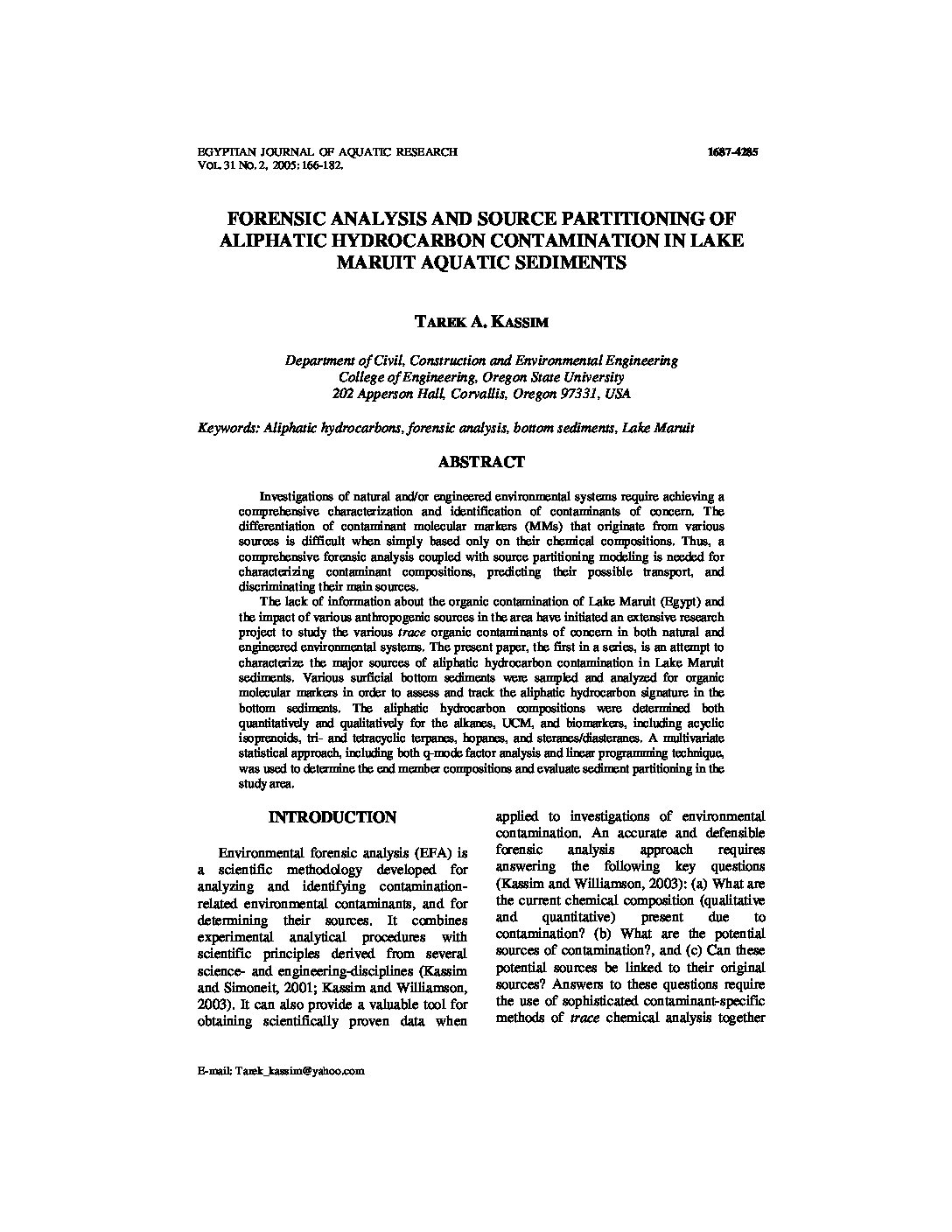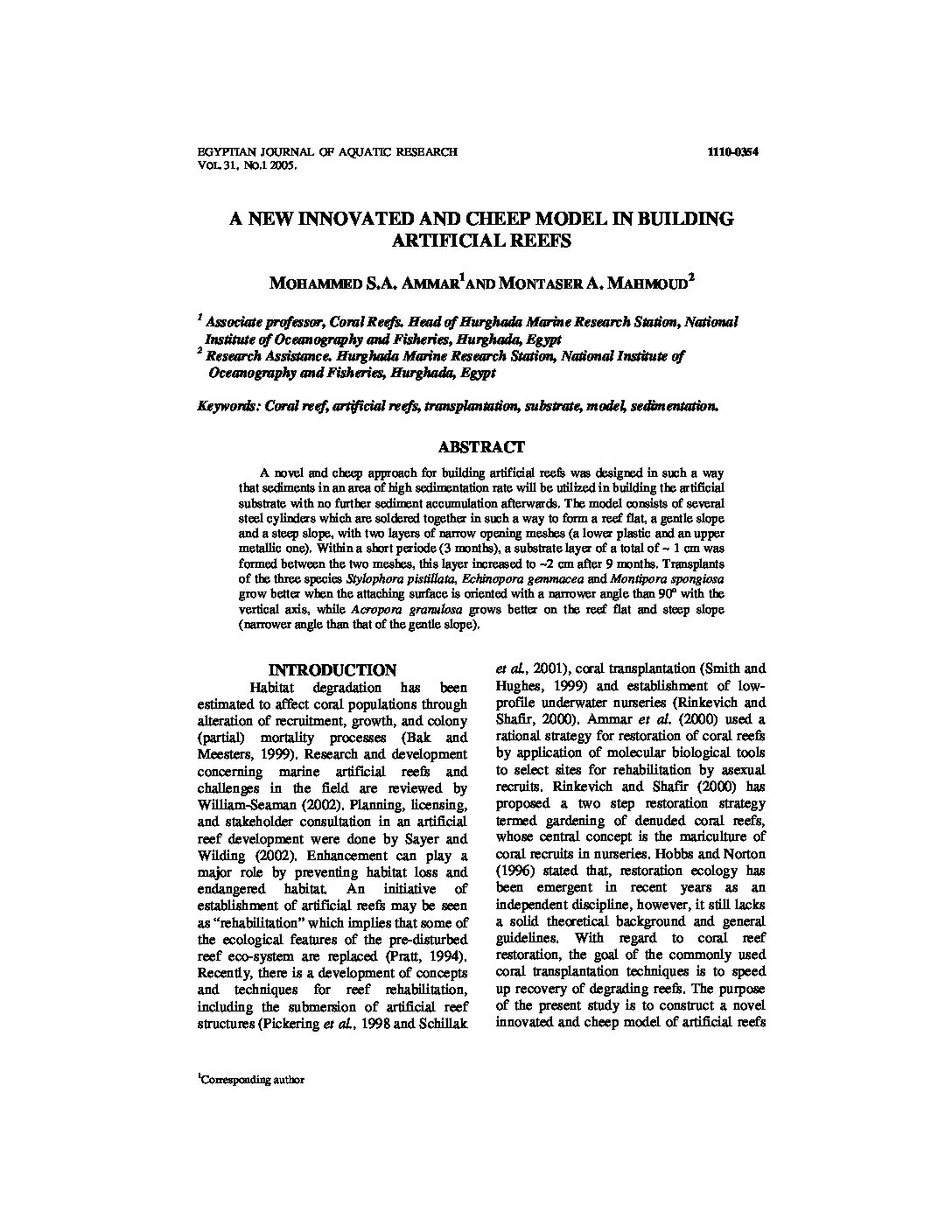Categories
vol-31FORENSIC ANALYSIS AND SOURCE PARTITIONING OF
ALIPHATIC HYDROCARBON CONTAMINATION IN LAKE
MARUIT AQUATIC SEDIMENTS
TAREK A. KASSIM
Department of Civil, Construction and Environmental Engineering
College of Engineering, Oregon State University
202 Apperson Hall, Corvallis, Oregon 97331, USA
Keywords: Aliphatic hydrocarbons, forensic analysis, bottom sediments, Lake Maruit
ABSTRACT
Investigations of natural and/or engineered environmental systems require achieving a
comprehensive characterization and identification of contaminants of concern. The
differentiation of contaminant molecular markers (MMs) that originate from various
sources is difficult when simply based only on their chemical compositions. Thus, a
comprehensive forensic analysis coupled with source partitioning modeling is needed for
characterizing contaminant compositions, predicting their possible transport, and
discriminating their main sources.
The lack of information about the organic contamination of Lake Maruit (Egypt) and
the impact of various anthropogenic sources in the area have initiated an extensive research
project to study the various trace organic contaminants of concern in both natural and
engineered environmental systems. The present paper, the first in a series, is an attempt to
characterize the major sources of aliphatic hydrocarbon contamination in Lake Maruit
sediments. Various surficial bottom sediments were sampled and analyzed for organic
molecular markers in order to assess and track the aliphatic hydrocarbon signature in the
bottom sediments. The aliphatic hydrocarbon compositions were determined both
quantitatively and qualitatively for the alkanes, UCM, and biomarkers, including acyclic
isoprenoids, tri- and tetracyclic terpanes, hopanes, and steranes/diasteranes. A multivariate
statistical approach, including both q-mode factor analysis and linear programming technique,
was used to determine the end member compositions and evaluate sediment partitioning in the
study area.







